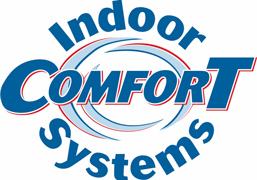
If you’re thinking about air conditioner installation in Croydon, you should also be investigating your new air conditioner’s SEER rating.
SEER stands for Seasonal Energy Efficiency Rating. In short, it looks at how capable your air conditioner is at converting electricity into cold air. A bigger number signifies your air conditioner is more efficient, which is excellent for your electric costs.
However, there are a lot of differing solutions out there for air conditioners. And a higher SEER rating often is accompanied by a higher price tag. So, how can you find out which one is ideal for your residence?
At Indoor Comfort Systems HVAC, we give you a free, no-pressure home comfort analysis. You can get one by contacting us at 215-741-5505. Our experienced air conditioner installers will collaborate with you to help you locate the right air conditioner for your needs. Plus, they’ll also provide you with a free, no-obligation estimate.
In the meantime, let’s discuss SEER ratings and how they can affect your family’s comfort. And your energy costs.
What Does the SEER Rating Really Matter?
In 2016, the federal government developed new SEER guidelines. New air conditioners are mandated at baseline 13 SEER in the northernmost United States and 14 SEER in the southeast and southwest. If you don’t know when you had your air conditioner put in or what its SEER ranking is, you can look at the sticker on the system outside your residence. If you can’t find the sticker, you can get in touch with us at 215-741-5505 for help.
If your air conditioner was replaced prior to that year, it’s likely much less efficient. Air conditioner technology has rapidly changed in the past couple of years, with big progress in energy efficiency and smart home capability. Pairing your new air conditioner with a smart thermostat could help you conserve more on cooling bills, since the thermostat can intuitively adjust your temperature settings when you’re gone.
If your present air conditioner has a SEER rating between 8 and 10, installing a 14-SEER system could save you an estimated 30–50% on annual electricity bills. Your savings relate to your air conditioner size and your temperature settings.
Is a Higher SEER Rating Always Better?
An air conditioner with a higher SEER rating will be more efficient at using electricity for cooling. The most efficient systems, which can go as high as 26 SEER, have ENERGY STAR® designation. This certification signifies the air conditioner matches EPA guidelines for energy savings and environmental conservation.
While ENERGY STAR air conditioners are typically more costly, you’ll usually get the difference repaid over the years through reduced air conditioning costs. These air conditioners, which are generally rated 16 SEER and greater, use about 8% less energy than other new models, according to ENERGY STAR.
One of the largest differences between a 14 SEER and 16 SEER is variable-speed capacity. A variable-speed air conditioner can cool at a number of speeds. This refines comfort for your residence while keeping your energy expenses down. It can also keep temperatures and humidity more even, since it can go for longer without requiring a lot more power.
When buying a variable-speed air conditioner, you’ll want to check that your furnace or air handler is compatible. This is due to the fact your air conditioner depends on this system’s blower to disperse cool air around your residence. Furnaces only last for around 20 years, so if yours is around that mark, we advise getting furnace installation at the same time so you can enjoy all the advantages of your variable-speed air conditioner.
When you’re prepared to replace your air conditioner, the cooling pros at Indoor Comfort Systems HVAC are ready to help. Call us at 215-741-5505 to schedule your free home comfort analysis right away.
